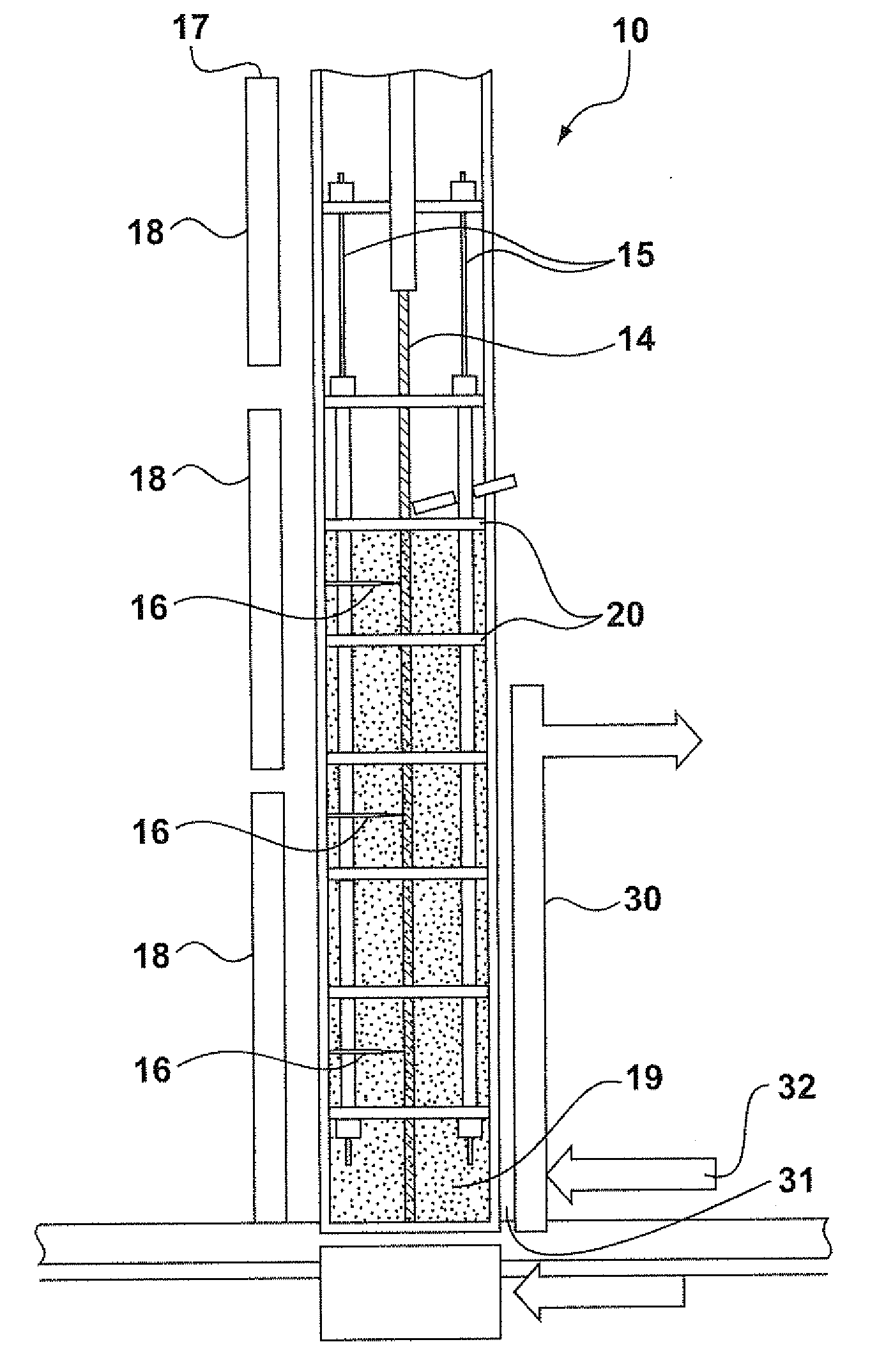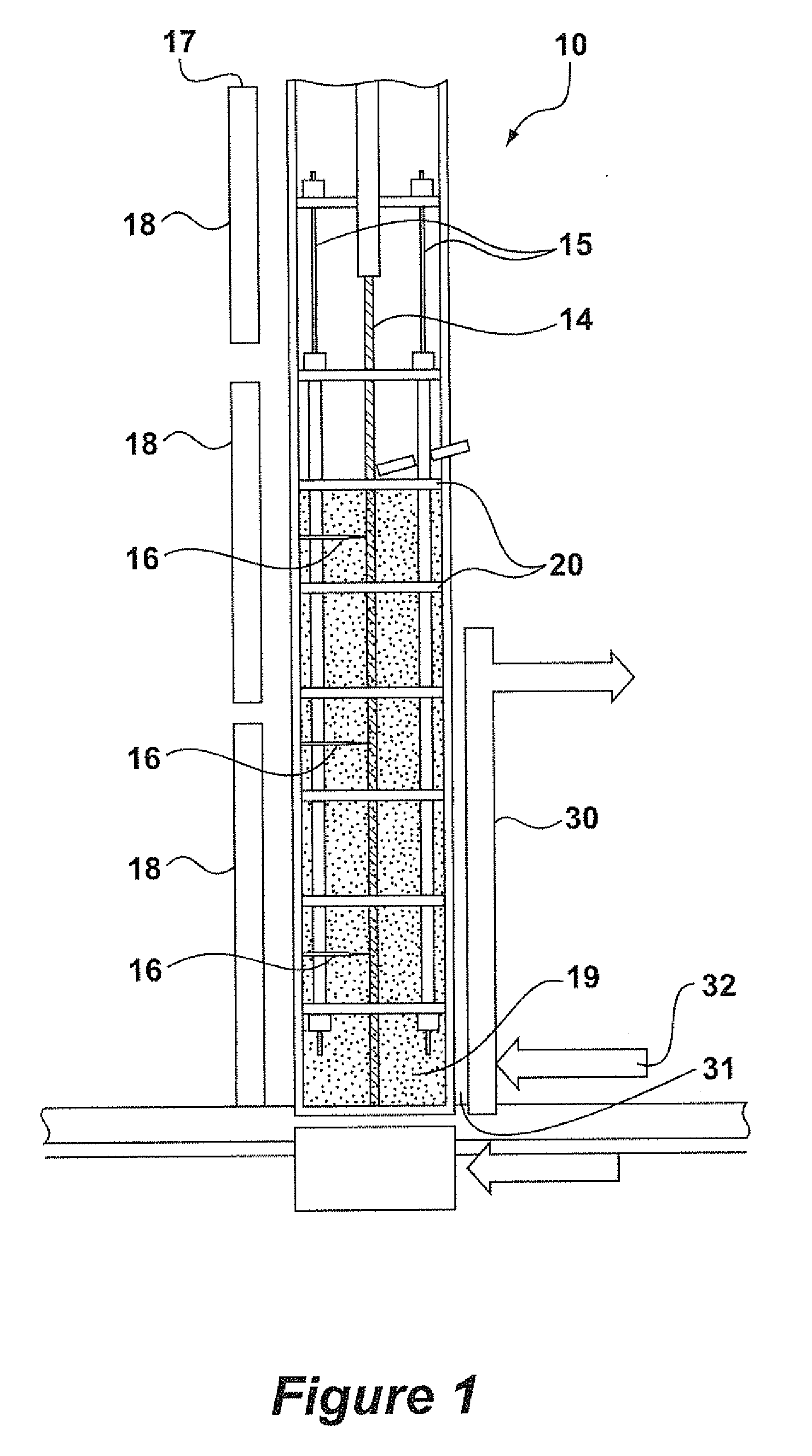Catalytic Oxychlorination
a catalytic oxychlorination and catalyst technology, applied in physical/chemical process catalysts, metal/metal-oxide/metal-hydroxide catalysts, halogenated hydrocarbon preparations, etc., can solve the problems of limited validity, the activity of the catalyst to suffer, and the problem of sticking is particularly acu
- Summary
- Abstract
- Description
- Claims
- Application Information
AI Technical Summary
Benefits of technology
Problems solved by technology
Method used
Image
Examples
Embodiment Construction
[0026]The following is a description of certain embodiments of the invention, given by way of example only and with reference to the drawings Taking the oxychlorination reaction of ethylene as the model, this reaction is represented by the following equation:
C2H4+½O2+2HCl→C2H4Cl2+H2O
[0027]One might expect that the objective of the skilled person would be to maximize the conversion of ethylene, if necessary by providing an excess of O2 and HCl in order to drive the reaction to the right hand side of the equation. In practice, there is an overriding need to maximize the conversion of HCl, because it is a highly corrosive gas, and its removal from the reactor effluent involves the consumption of caustic, which is an expensive material. The catalysts used in the process of the present invention provide a HCl conversion, as defined herein, of 99.4% or better.
[0028]EP 0 119 933 B1 focuses on the HCl / C2H4 ratio as the important parameter in determining stickiness. Indeed, below a HCl / ethyl...
PUM
| Property | Measurement | Unit |
|---|---|---|
| wt % | aaaaa | aaaaa |
| wt % | aaaaa | aaaaa |
| wt % | aaaaa | aaaaa |
Abstract
Description
Claims
Application Information
 Login to View More
Login to View More - R&D
- Intellectual Property
- Life Sciences
- Materials
- Tech Scout
- Unparalleled Data Quality
- Higher Quality Content
- 60% Fewer Hallucinations
Browse by: Latest US Patents, China's latest patents, Technical Efficacy Thesaurus, Application Domain, Technology Topic, Popular Technical Reports.
© 2025 PatSnap. All rights reserved.Legal|Privacy policy|Modern Slavery Act Transparency Statement|Sitemap|About US| Contact US: help@patsnap.com



